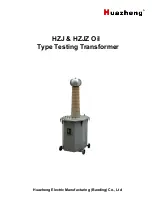
10
MDS 1710A/C and MDS 2710A/C/D
MDS 05-3447A01, Rev. F
NOTE:
Use the radio in negative ground systems only.
5. Set the radio con
fi
guration. The transceiver is designed for quick
installation with a minimum of software con
fi
guration required in
most cases. The selections that
must
be made or veri
fi
ed for new
installations are:
• Transmit frequency
• Receive frequency
The operating frequencies are not set at the factory unless they were
speci
fi
ed at the time of order. Determine the transmit and receive
frequencies to be used, and follow the steps below to program them.
6. Connect a hand-held terminal (HHT) to the
DIAG.
connector. When
the HHT beeps, press
to receive the ready “>” prompt.
• Set the operating frequencies using the
TX xxx.xxxxx
(transmit) and
RX xxx.xxxxx
(receive) commands.
• Press
after each command. After programming, the HHT
reads
PROGRAMMED OK
to indicate successful entry.
• Set other transceiver parameters as required. A complete list of
transceiver commands is provided in
Section 5.0, TRANSCEIVER
PROGRAMMING
.
ENTER
ENTER
MDS 05-3447A01, Rev. F
MDS 1710A/C and MDS 2710A/C/D
31
• The correct interface between the transceiver and the connected
data equipment (correct cable wiring, proper data format, timing,
etc.)
6.1 LED Indicators
The LED status indicators are an important troubleshooting tool and
should be checked whenever a problem is suspected.
Table 5 on page 16
describes the function of each status LED.
6.2 Event Codes
When an alarm condition exists, the transceiver creates a code that can
be read on an HHT connected to the
DIAG.
port. These codes can be very
helpful in resolving many system difficulties. Refer to
Table 8
for a def-
inition of the event codes.
Checking for Alarms
—STAT command
To check for alarms, enter
STAT
on the HHT. If no alarms exist, the mes-
sage
NO ALARMS PRESENT
appears at the top of the display (
Figure 11
).
Invisible place holder
Figure 11. HHT Display in Response to STAT Command
If an alarm does exist, a two-digit alarm code (00–31) is displayed and
the event is identified as a Major or Minor Alarm. A brief description of
the alarm is also given.
If more than one alarm exists, the word
MORE
appears at the bottom of
the screen. To view additional alarms, press
.
Major Alarms vs. Minor Alarms
Major Alarms
—report serious conditions that generally indicate a hard-
ware failure, or other abnormal condition that will prevent (or seriously
degrade) further operation of the transceiver. Major alarms generally
indicate the need for factory repair. Contact MDS for further assistance.
ENTER











































